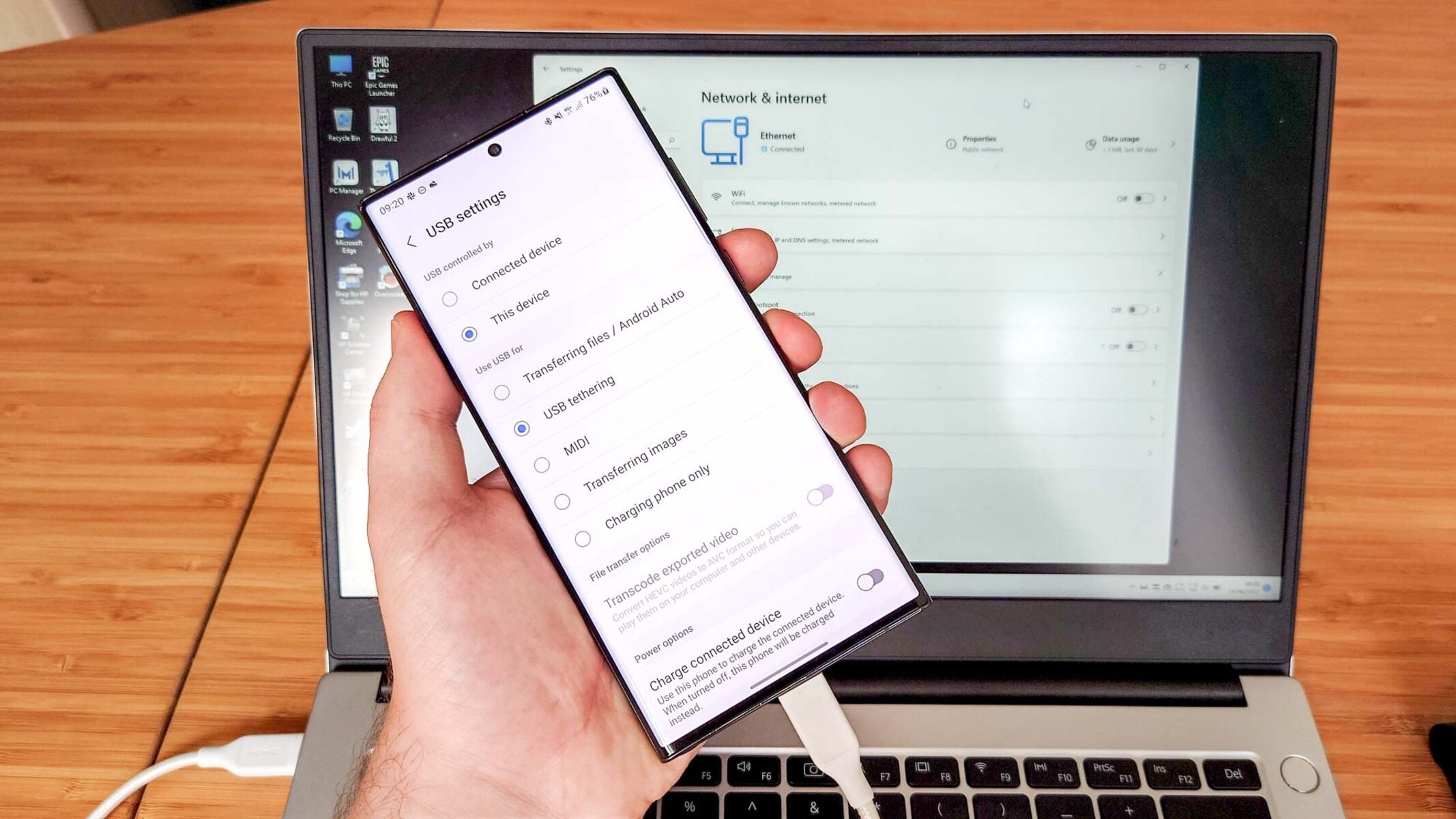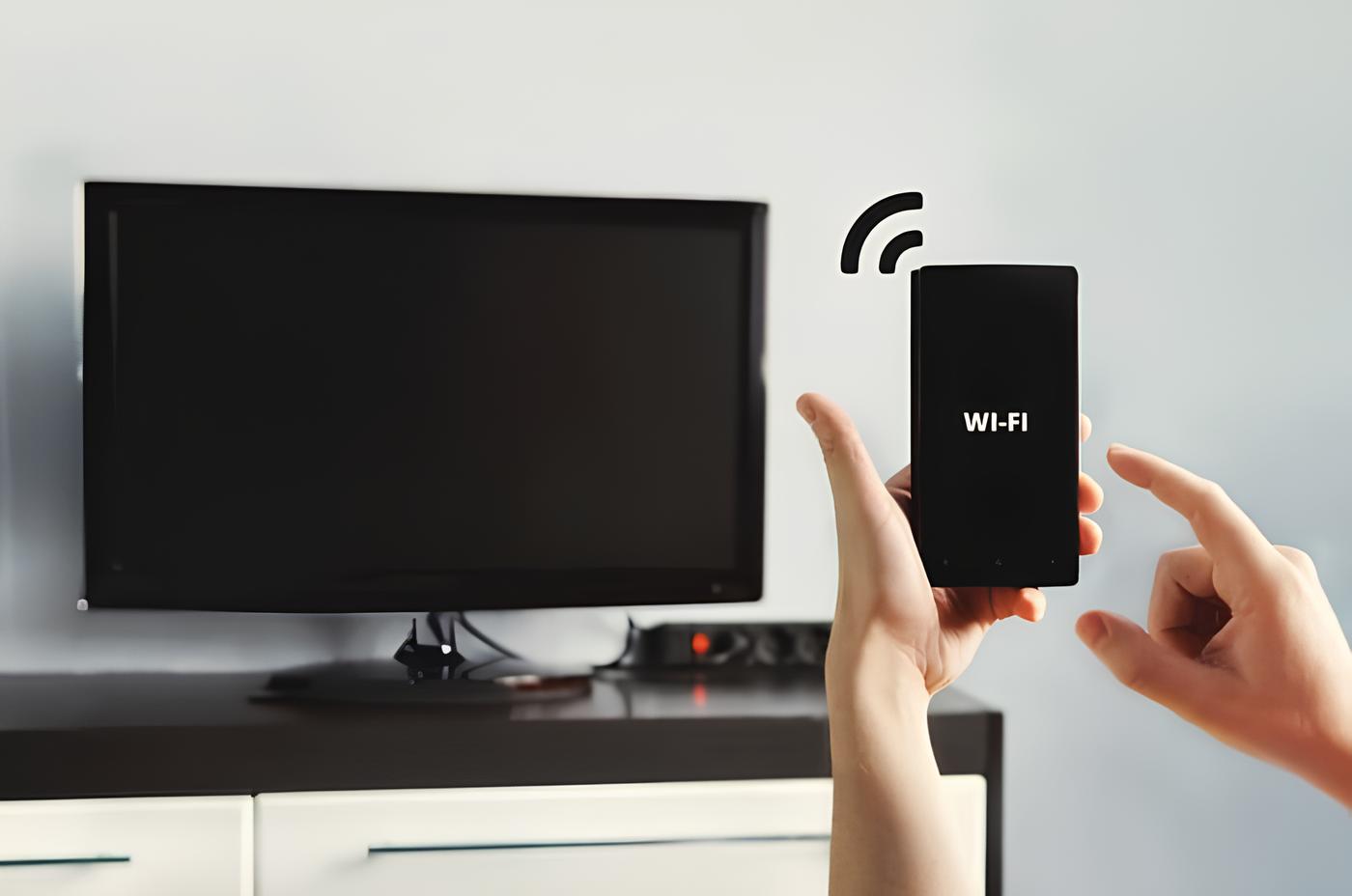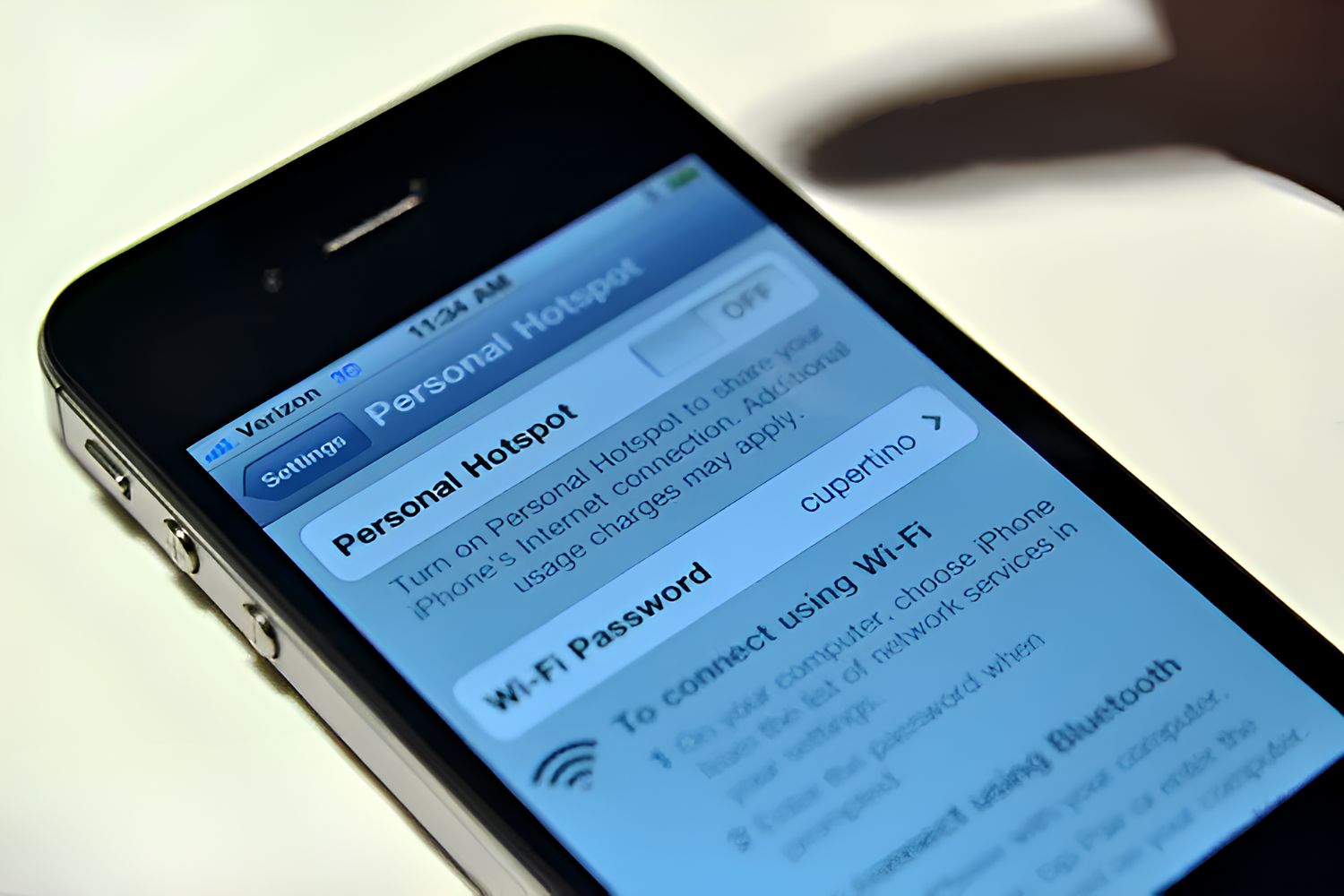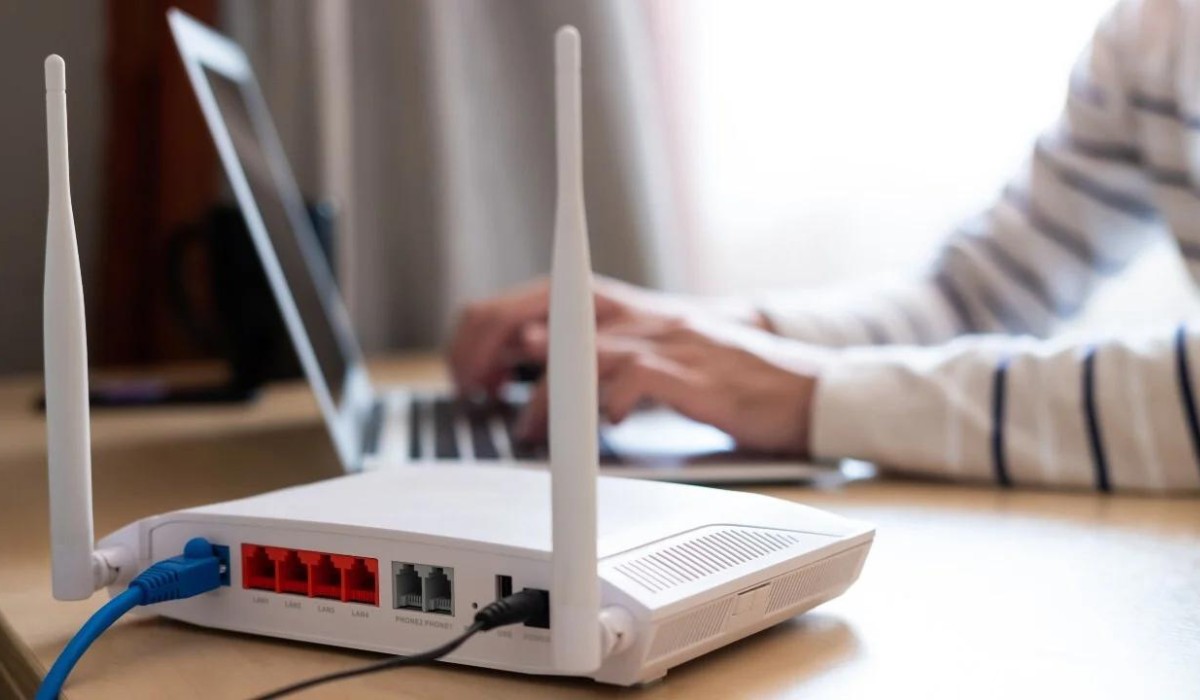Introduction
Creating a Wi-Fi hotspot can provide a convenient and reliable internet connection in various settings, from homes and offices to public spaces. Whether you need to share your internet connection with multiple devices or establish a temporary network for a specific event, setting up a hotspot can offer flexibility and connectivity on the go. This step-by-step guide will walk you through the process of creating a hotspot, from choosing the right location to securing the network. By following these instructions, you can ensure a smooth and efficient setup, allowing you to enjoy seamless internet access wherever you go.
A well-constructed hotspot not only offers connectivity but also promotes productivity and convenience. Understanding the essential steps involved in creating a hotspot will empower you to take full advantage of this technology. From selecting the appropriate location to ensuring the security of your network, each step plays a crucial role in establishing a reliable and efficient Wi-Fi hotspot. By the end of this guide, you will have the knowledge and confidence to create a hotspot that meets your specific needs, whether for personal or professional use.
So, let's dive into the details and embark on the journey of setting up a Wi-Fi hotspot. Whether you're a tech enthusiast looking to expand your networking skills or a professional seeking a practical solution for internet sharing, this guide will equip you with the knowledge and expertise needed to create a hotspot that enhances connectivity and convenience. Let's get started!
Step 1: Choose the Right Location
Selecting the right location for your Wi-Fi hotspot is crucial to ensure optimal coverage and connectivity. The chosen location should take into account factors such as proximity to power sources, minimal obstructions, and the intended usage of the hotspot. Here are the key considerations to keep in mind when choosing the right location for your hotspot:
-
Assess the Coverage Area: Begin by assessing the area where you intend to provide Wi-Fi access. Consider the size of the space and the number of potential users. For larger areas, such as office buildings or outdoor venues, you may need to strategically place the hotspot to ensure comprehensive coverage.
-
Evaluate Obstructions: Identify potential obstructions that could interfere with the Wi-Fi signal, such as thick walls, metal structures, or electronic interference from other devices. Choose a location that minimizes these obstructions to maximize signal strength and stability.
-
Power Source Accessibility: Ensure that the chosen location is in close proximity to a power source, especially if you are using a standalone hotspot device. This will prevent the need for long extension cords and reduce the risk of accidental disconnection.
-
Consider User Accessibility: If the hotspot is intended for public use, consider the accessibility for users. Choose a location that is easily identifiable and accessible to those who will be connecting to the network.
-
Environmental Factors: Take into account environmental factors such as weather conditions and temperature fluctuations, especially if the hotspot will be deployed in outdoor settings. Protecting the hotspot device from environmental elements is essential to ensure its longevity and consistent performance.
By carefully considering these factors, you can choose a location that optimizes the coverage and accessibility of your Wi-Fi hotspot. This thoughtful approach sets the foundation for a reliable and efficient network, laying the groundwork for the subsequent steps in setting up a successful Wi-Fi hotspot.
Step 2: Select the Hotspot Device
Choosing the right hotspot device is a pivotal step in creating a reliable Wi-Fi hotspot. The selection process involves considering various factors to ensure that the chosen device aligns with your specific needs and provides seamless connectivity. Here's a detailed exploration of the key considerations when selecting a hotspot device:
1. Purpose and Intended Usage
Before diving into the plethora of hotspot devices available, it's essential to define the purpose and intended usage of the hotspot. Are you setting up a hotspot for personal use within your home or planning to deploy it in a commercial or public setting? Understanding the intended usage will help narrow down the options and identify features that are essential for your specific requirements.
2. Device Type and Mobility
Hotspot devices come in various forms, including portable hotspots, mobile routers, and integrated hotspot features in smartphones. Consider the level of mobility you require. If you need a portable solution for on-the-go connectivity, a compact and battery-powered portable hotspot may be the ideal choice. Alternatively, for a fixed location such as an office or home, a stationary mobile router may offer enhanced performance and stability.
3. Network Compatibility and Speed
Ensure that the selected hotspot device is compatible with the network technology available in your area. Whether it's 4G LTE, 5G, or Wi-Fi 6, compatibility with the latest network standards can significantly impact the speed and reliability of the hotspot connection. Assess the maximum supported data transfer speeds and network capabilities to align with your desired level of performance.
4. Security Features
Security is paramount when establishing a Wi-Fi hotspot. Look for hotspot devices that offer robust security features such as WPA3 encryption, MAC address filtering, and guest network isolation. These features help safeguard the network from unauthorized access and potential security breaches, ensuring a secure browsing experience for users.
5. Battery Life and Power Options
For portable hotspot devices, battery life and power options are critical considerations. Evaluate the battery capacity and estimated usage time to ensure that the device can sustain continuous operation, especially in scenarios where access to power sources may be limited. Additionally, consider power-saving features and the flexibility to charge the device via USB or other convenient methods.
6. User Capacity and Device Management
If the hotspot is intended for public or shared use, consider the device's ability to handle multiple concurrent connections. Look for features that enable efficient device management, such as customizable access controls, usage monitoring, and the ability to prioritize specific devices or applications. These capabilities are particularly valuable in high-traffic environments where network optimization is essential.
By carefully evaluating these factors, you can make an informed decision when selecting a hotspot device that aligns with your specific requirements. The chosen device will serve as the cornerstone of your Wi-Fi hotspot, influencing its performance, security, and overall user experience. With the right hotspot device in place, you'll be well-prepared to proceed to the next steps of setting up and optimizing your Wi-Fi hotspot for seamless connectivity.
Step 3: Set Up the Hotspot
Setting up the Wi-Fi hotspot involves configuring the chosen hotspot device to enable wireless connectivity and establish a functional network. This step is pivotal in ensuring that the hotspot operates seamlessly and provides reliable internet access to connected devices. Here's a comprehensive guide to the essential tasks involved in setting up the hotspot:
-
Device Initialization: Begin by powering on the hotspot device and accessing its configuration interface. This typically involves connecting to the device via a web browser or a dedicated mobile app. Follow the manufacturer's instructions to access the initial setup wizard or configuration settings.
-
Network Configuration: Within the device's interface, configure the network settings to define the Wi-Fi network name (SSID) and password. Choose a unique and easily recognizable SSID that reflects the purpose or location of the hotspot. Set a strong and secure password to prevent unauthorized access to the network.
-
Wireless Settings: Adjust the wireless settings to specify the Wi-Fi channel, frequency band, and transmission power. Optimizing these settings can enhance the overall performance and coverage of the hotspot, especially in environments with potential interference from other wireless networks.
-
Guest Network Setup (Optional): If the hotspot will be used in a public or shared environment, consider setting up a guest network to provide separate access for visitors or temporary users. This feature enhances network security by isolating guest devices from the primary network while still offering internet connectivity.
-
Firmware Updates: Check for firmware updates for the hotspot device and apply any available upgrades to ensure that the device operates with the latest features, performance enhancements, and security patches. Keeping the device's firmware up to date is essential for maintaining optimal functionality and addressing potential vulnerabilities.
-
Quality of Service (QoS) Configuration: Depending on the capabilities of the hotspot device, consider configuring QoS settings to prioritize specific types of network traffic. This can help optimize the distribution of bandwidth, ensuring a seamless experience for critical applications such as video streaming or VoIP calls.
-
Device Placement and Signal Testing: Once the initial configuration is complete, strategically place the hotspot device in the chosen location. Test the signal strength and connectivity from various points within the coverage area to ensure uniform coverage and identify potential dead zones or areas with weak signal reception.
By following these steps, you can effectively set up the Wi-Fi hotspot, laying the groundwork for a functional and reliable network. The completion of this phase marks a significant milestone in the process of creating a seamless connectivity solution, paving the way for the subsequent steps in securing and optimizing the Wi-Fi hotspot.
Step 4: Secure the Hotspot
Securing the Wi-Fi hotspot is paramount to safeguarding the network from unauthorized access, potential threats, and data breaches. By implementing robust security measures, you can ensure that the hotspot provides a safe and reliable internet connection for all users. Here's an in-depth exploration of the essential steps to secure the hotspot and protect it from potential vulnerabilities:
-
Encryption Protocols: Enable WPA3 encryption or the highest available encryption protocol supported by the hotspot device. Encryption plays a critical role in securing the wireless communication between connected devices and the hotspot, preventing eavesdropping and unauthorized access to transmitted data.
-
Strong Password Policies: Implement strong password policies for accessing the Wi-Fi network. Choose complex and unique passwords that combine uppercase and lowercase letters, numbers, and special characters. Avoid using easily guessable passwords or default credentials to prevent unauthorized intrusion.
-
Network Access Controls: Utilize MAC address filtering to control which devices can connect to the hotspot. By specifying the MAC addresses of authorized devices, you can restrict network access to approved devices only, enhancing the overall security of the network.
-
Firewall Configuration: If the hotspot device includes firewall capabilities, configure firewall rules to filter incoming and outgoing traffic. Define specific rules to allow or block certain types of network traffic based on predefined criteria, adding an additional layer of protection to the network.
-
Regular Security Audits: Conduct regular security audits to identify and address potential vulnerabilities within the hotspot network. Perform thorough assessments of the network's security settings, access controls, and encryption protocols to ensure ongoing protection against emerging threats.
-
Firmware and Software Updates: Stay vigilant about applying firmware and software updates for the hotspot device. Manufacturers often release updates to address security vulnerabilities and improve the overall stability of the device. Keeping the device's firmware and software up to date is crucial for maintaining a secure network environment.
-
User Education and Awareness: Educate users about best practices for secure Wi-Fi usage. Encourage them to be mindful of the websites they access, avoid sharing sensitive information over public hotspots, and regularly update their devices with the latest security patches and antivirus software.
By implementing these security measures, you can fortify the Wi-Fi hotspot against potential threats and vulnerabilities, creating a safe and reliable network environment for all users. The proactive approach to securing the hotspot ensures that users can enjoy seamless connectivity without compromising on privacy and data security.
Step 5: Test the Hotspot
After setting up a Wi-Fi hotspot, thorough testing is essential to ensure that the network operates seamlessly and provides reliable connectivity to all intended users. Testing the hotspot encompasses various aspects, including signal strength, network performance, and user experience. By conducting comprehensive tests, you can identify potential issues, optimize the network settings, and validate the overall functionality of the hotspot. Here's a detailed exploration of the key elements involved in testing the hotspot:
-
Signal Strength and Coverage Assessment: Begin by assessing the signal strength and coverage of the Wi-Fi hotspot across the intended area. Use a Wi-Fi signal analyzer or a dedicated mobile app to measure the signal strength at different locations within the coverage area. Identify any areas with weak signal reception or potential interference, and consider adjusting the placement or settings of the hotspot device to optimize coverage.
-
Connection Stability and Speed Testing: Test the stability and speed of the internet connection provided by the hotspot. Conduct speed tests using online tools or dedicated applications to measure the upload and download speeds. Evaluate the consistency of the connection and identify any fluctuations in speed or latency that may impact user experience.
-
Device Compatibility and User Access: Verify the compatibility of various devices with the hotspot network. Connect different types of devices, including smartphones, laptops, and tablets, to the network and ensure seamless connectivity. Test the user access process, including password authentication and network discovery, to confirm that users can easily connect to the hotspot without encountering connectivity issues.
-
Load Testing and Capacity Assessment: If the hotspot is intended for public or shared use, conduct load testing to assess its capacity to handle multiple concurrent connections. Simulate a scenario with a high number of connected devices and monitor the network's performance under increased load. Identify any potential bottlenecks or performance limitations and consider optimizing the network settings to accommodate higher user capacity.
-
Roaming and Handoff Testing (If Applicable): If the hotspot supports seamless roaming and handoff between access points, conduct tests to validate these capabilities. Move between different areas within the coverage zone while connected to the hotspot and verify that the handoff process occurs seamlessly, ensuring uninterrupted connectivity during transitions.
-
Application and Service Testing: Test specific applications and services that users are likely to utilize over the hotspot, such as video streaming, VoIP calls, or online gaming. Assess the performance of these applications over the network and ensure that the hotspot can support the required bandwidth and latency for a smooth user experience.
By meticulously testing the Wi-Fi hotspot across these key areas, you can validate its performance, identify potential areas for improvement, and ensure that it meets the connectivity needs of users. The testing phase serves as a critical step in the setup process, allowing you to fine-tune the network and address any underlying issues before deploying the hotspot for regular use.
Conclusion
In conclusion, the process of creating a Wi-Fi hotspot involves a series of vital steps, each contributing to the establishment of a reliable and efficient network. From choosing the optimal location and selecting the right hotspot device to setting up, securing, and testing the network, every phase plays a pivotal role in ensuring seamless connectivity for users.
By carefully considering the coverage area, obstructions, power source accessibility, and environmental factors when choosing the location, individuals can lay the groundwork for comprehensive Wi-Fi coverage. The strategic placement of the hotspot device and the consideration of mobility, network compatibility, security features, and user capacity during the device selection phase are instrumental in shaping the performance and functionality of the hotspot.
The setup phase involves configuring the network settings, wireless parameters, and optional features such as guest networks and Quality of Service (QoS). This critical step ensures that the hotspot operates optimally, providing a stable and secure internet connection for all users.
Security measures, including encryption protocols, strong password policies, access controls, and regular security audits, are essential for safeguarding the hotspot against potential threats and vulnerabilities. By prioritizing network security, individuals can instill confidence in users and protect sensitive data transmitted over the network.
Thorough testing of the hotspot, encompassing signal strength assessment, connection stability testing, device compatibility verification, and load testing, is imperative to validate the network's performance and identify areas for optimization. This meticulous testing phase ensures that the hotspot meets the connectivity needs of users and delivers a seamless browsing experience.
In essence, the successful creation of a Wi-Fi hotspot requires a holistic approach, encompassing careful planning, informed decision-making, and meticulous execution. By following the step-by-step guide outlined in this article, individuals can create a hotspot that not only provides reliable internet access but also promotes productivity, connectivity, and convenience in various settings.
Whether the hotspot is intended for personal use, business operations, or public access, the adherence to best practices in hotspot creation ensures that users can seamlessly connect to the network, access online resources, and stay connected in an increasingly digital world. Embracing the principles of location optimization, device selection, setup, security, and testing empowers individuals to create a hotspot that enhances connectivity and enriches the digital experience for all users.
























